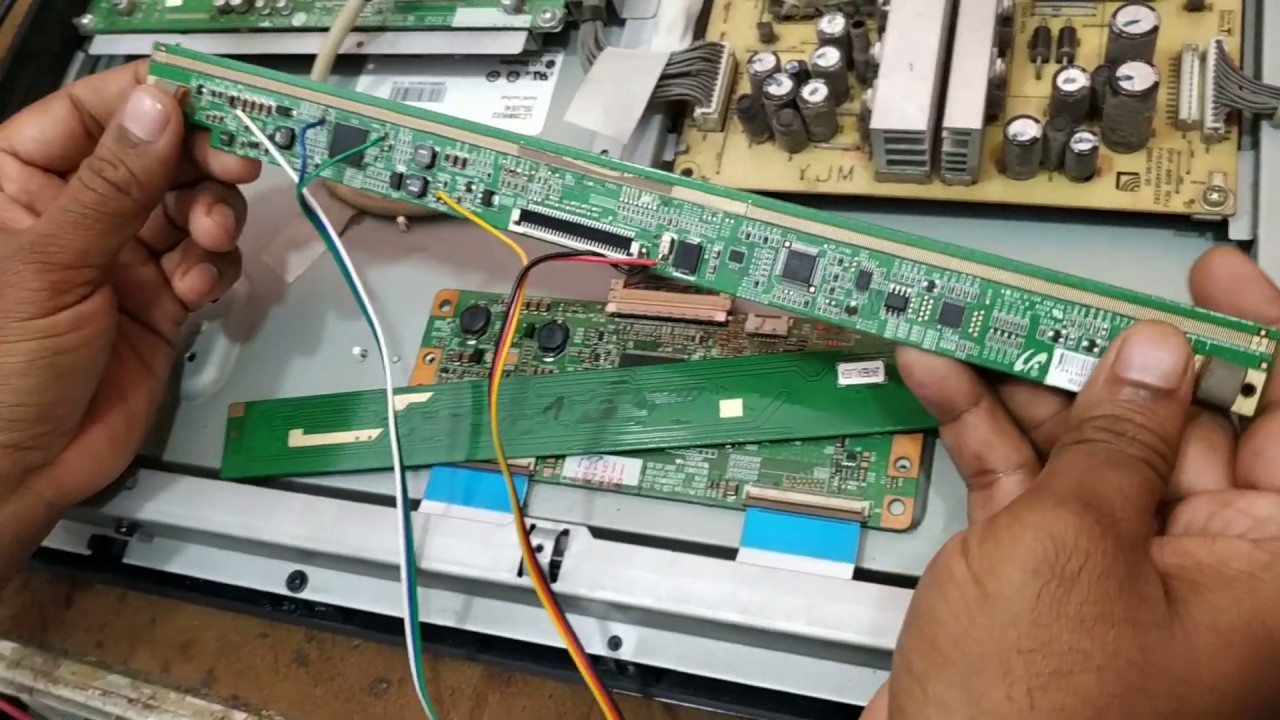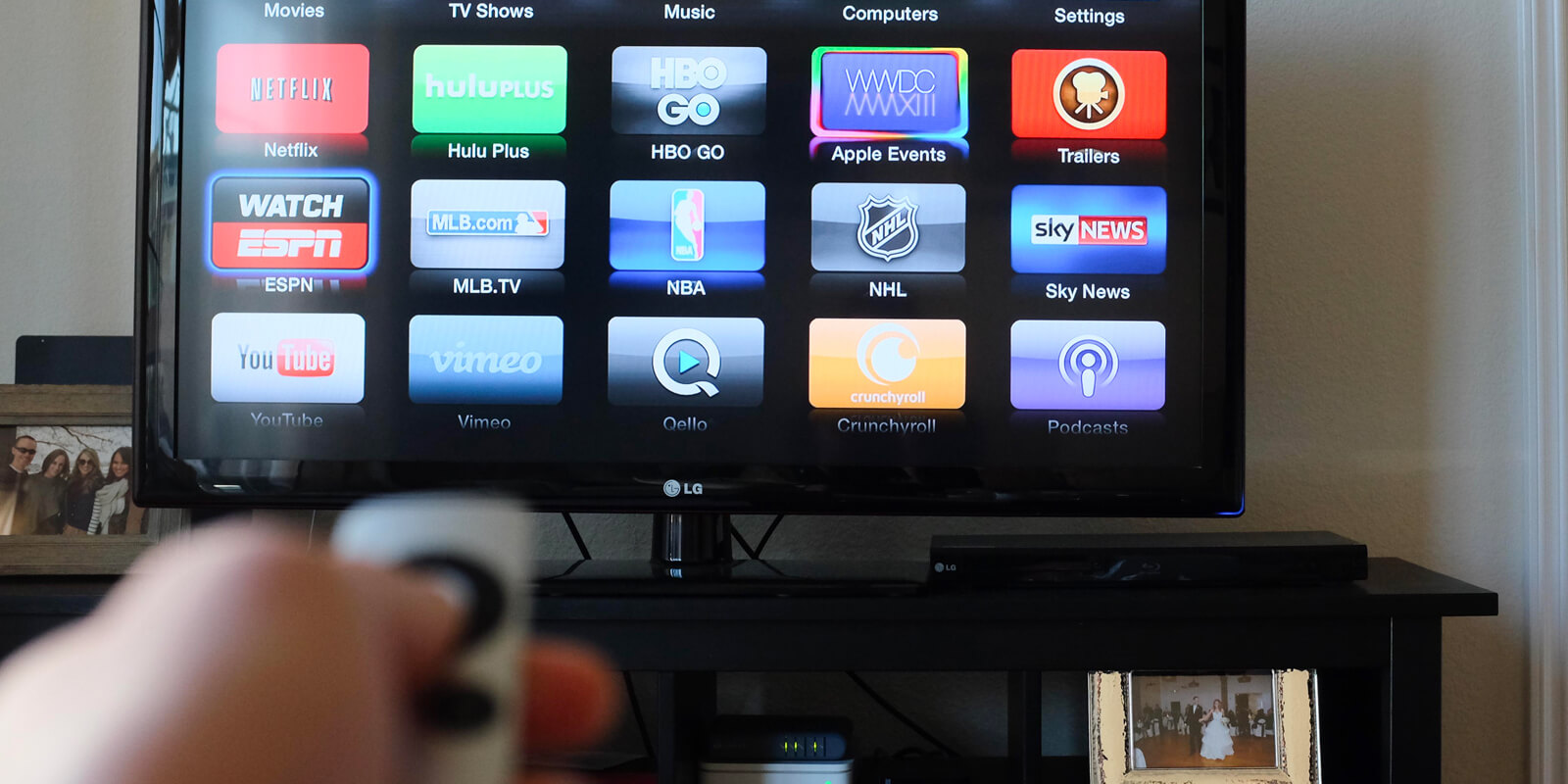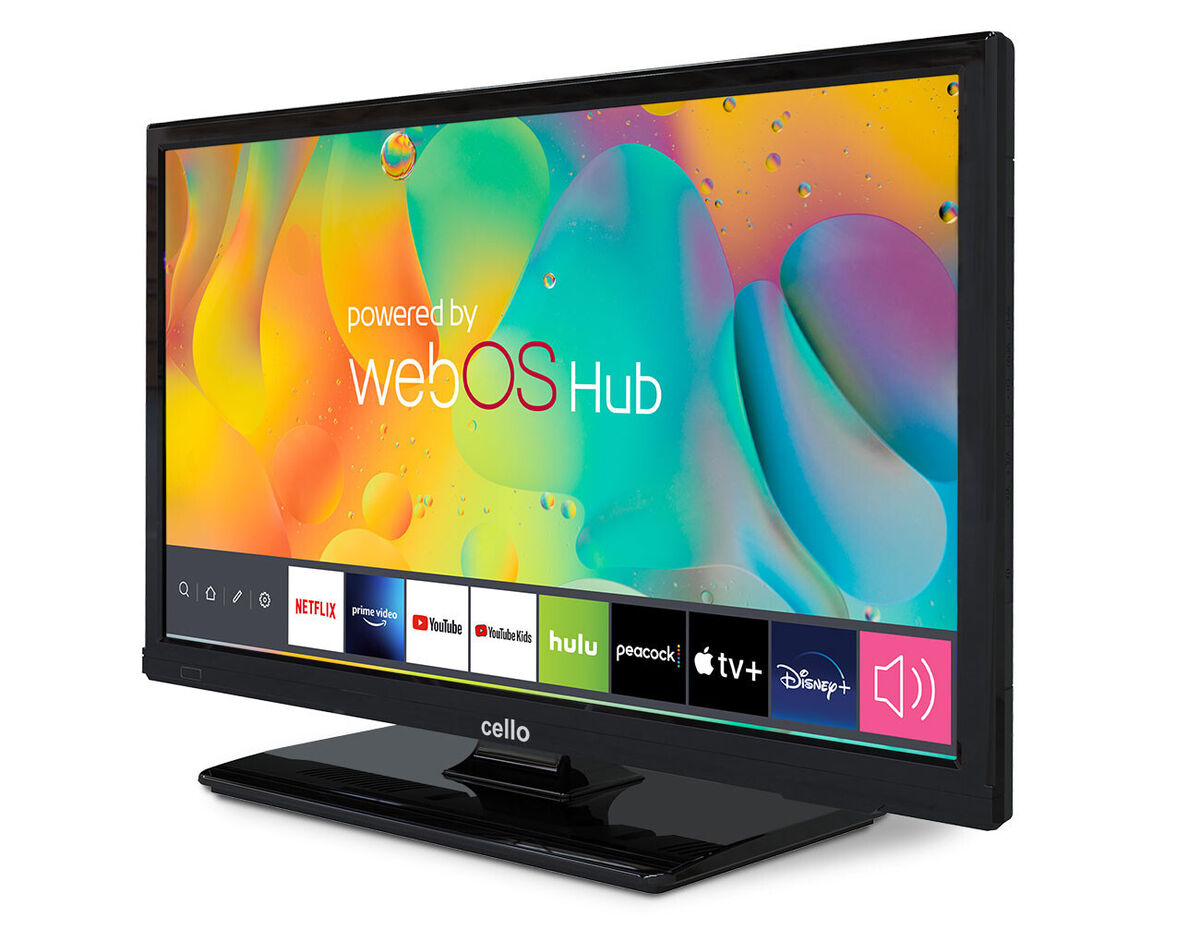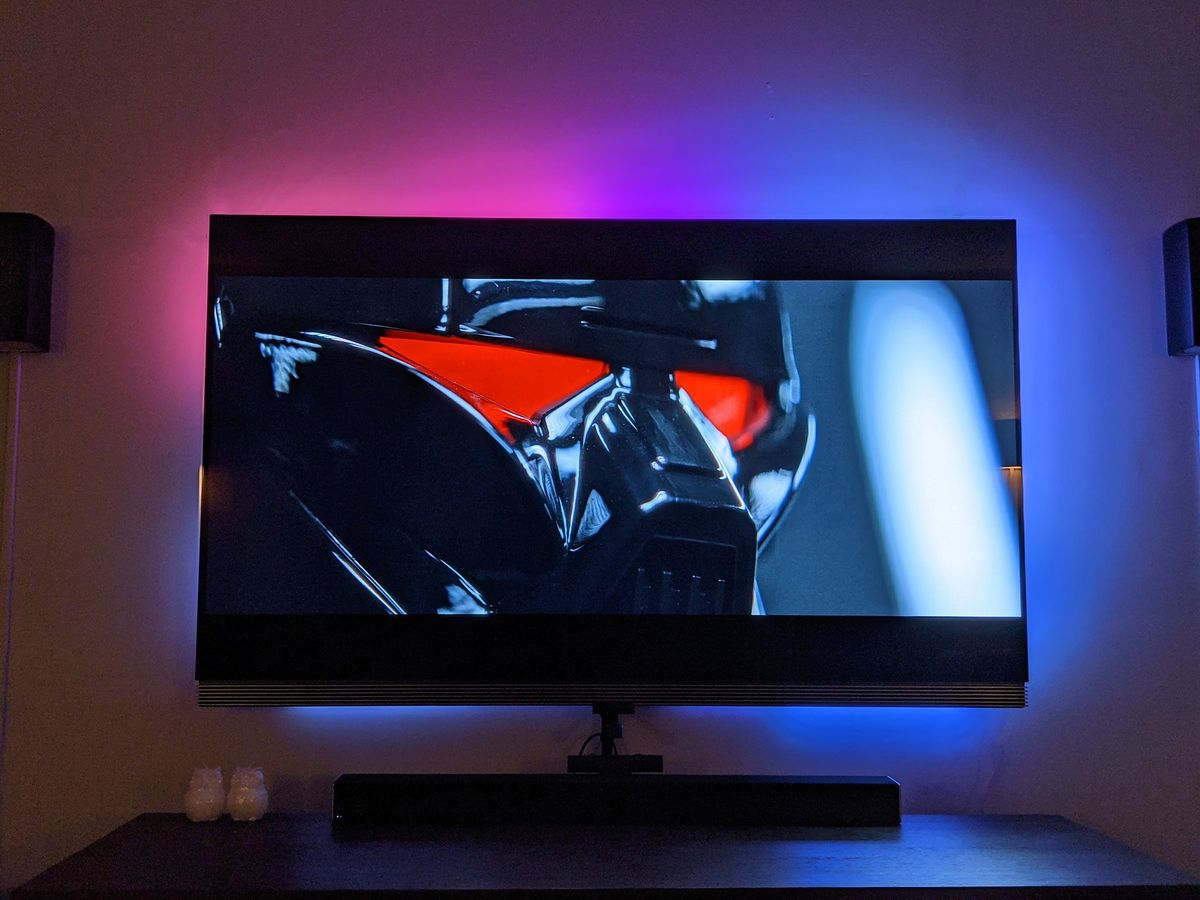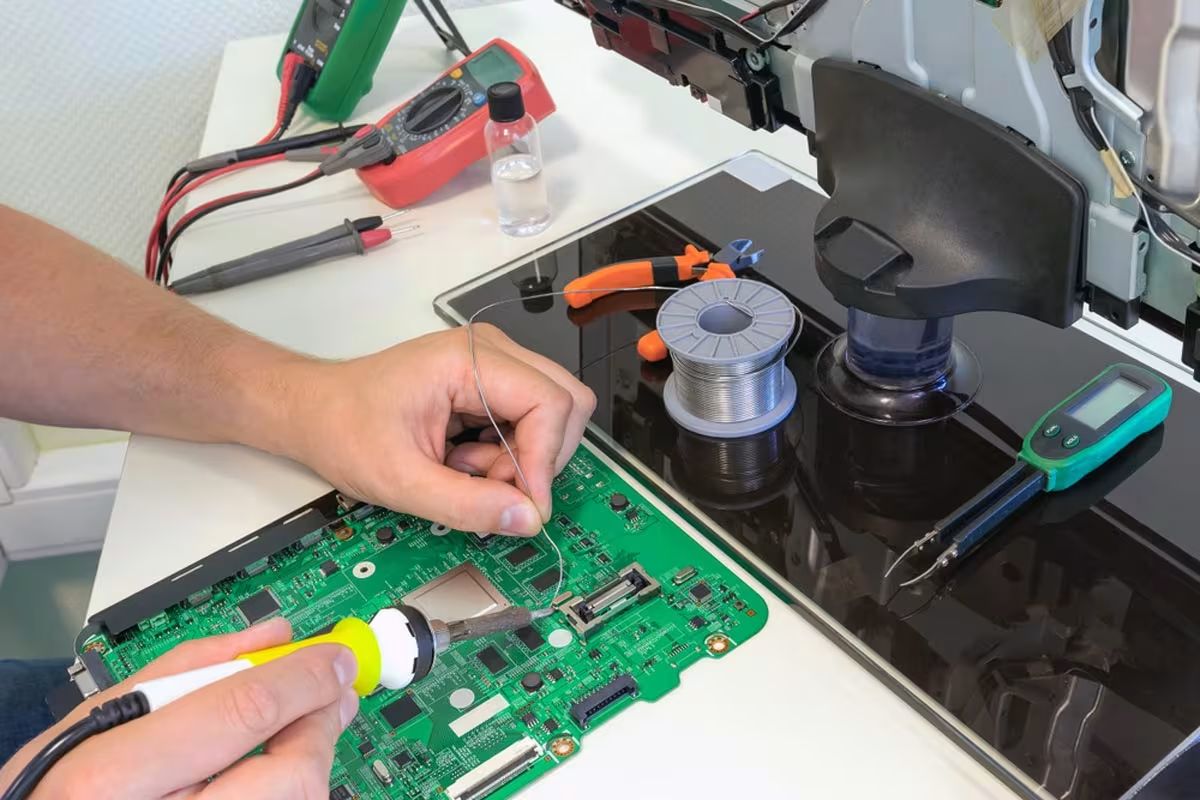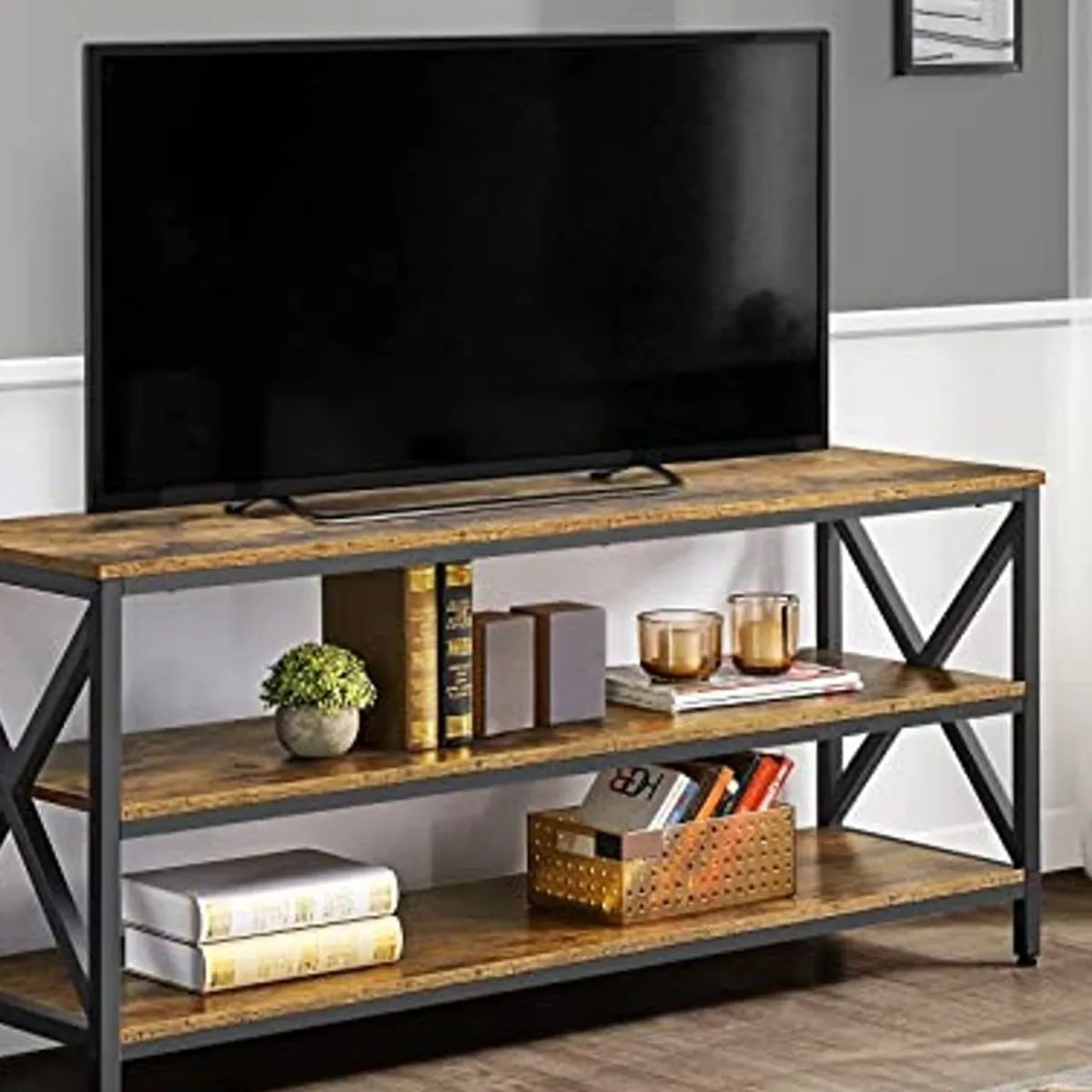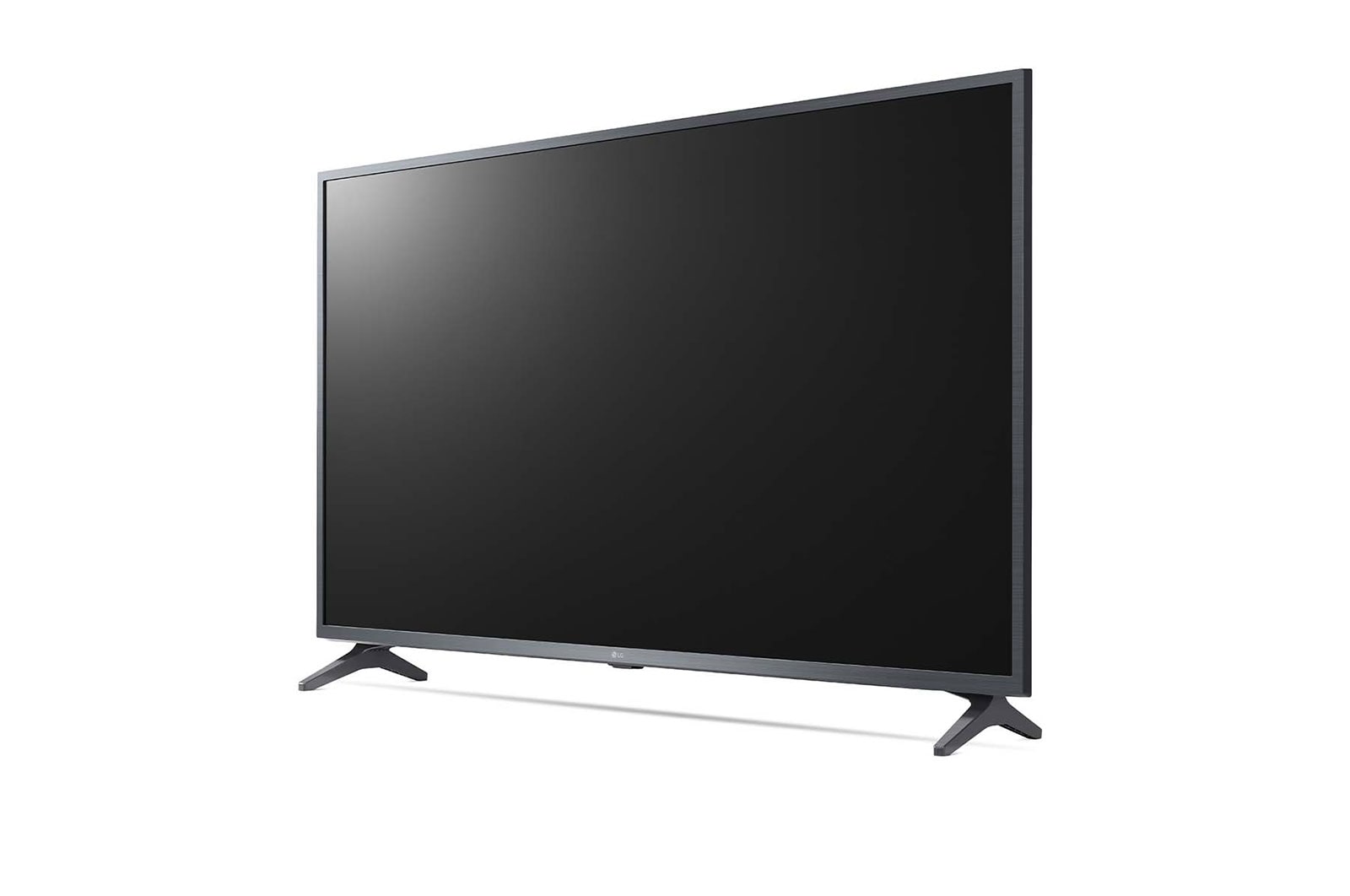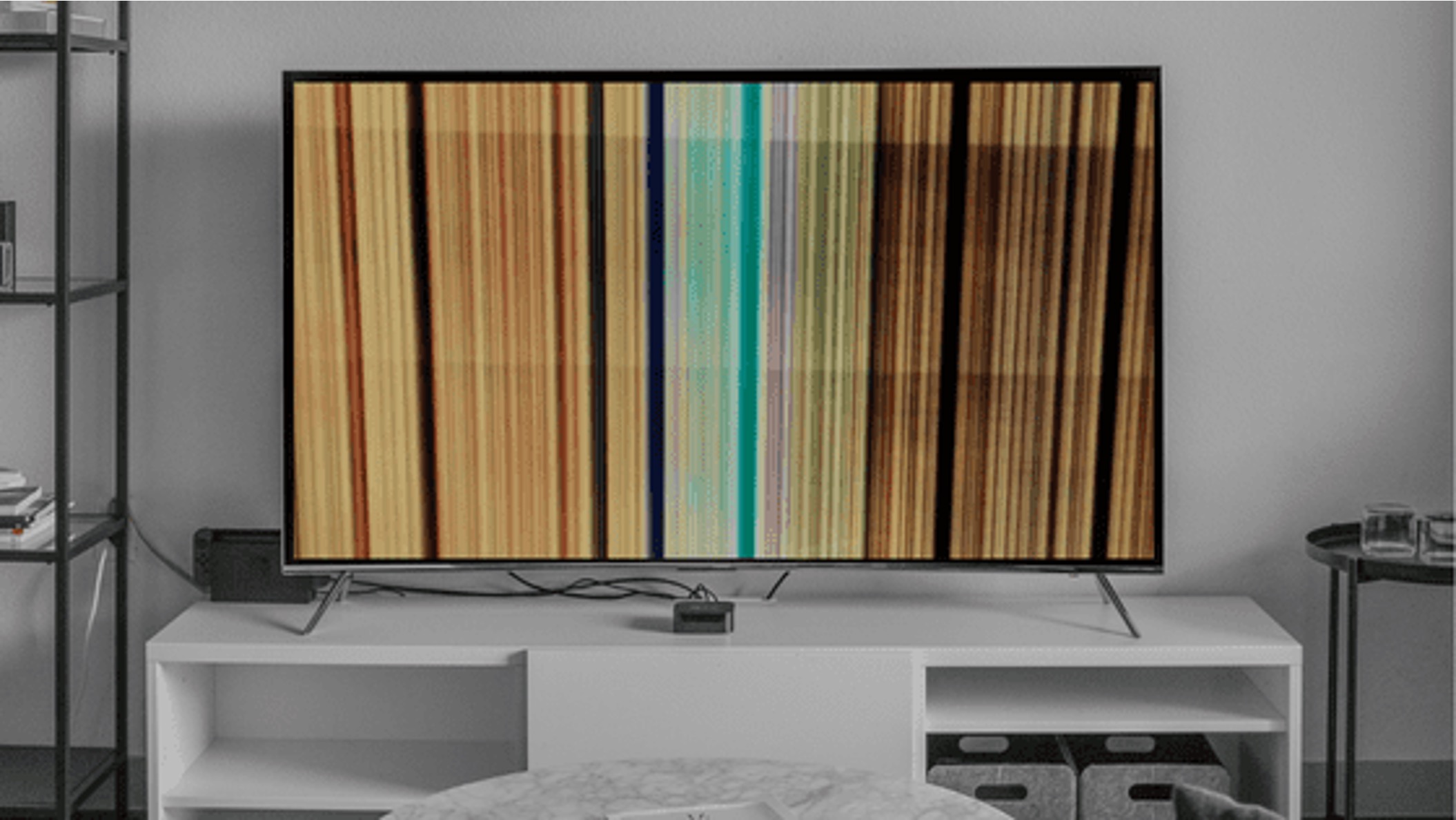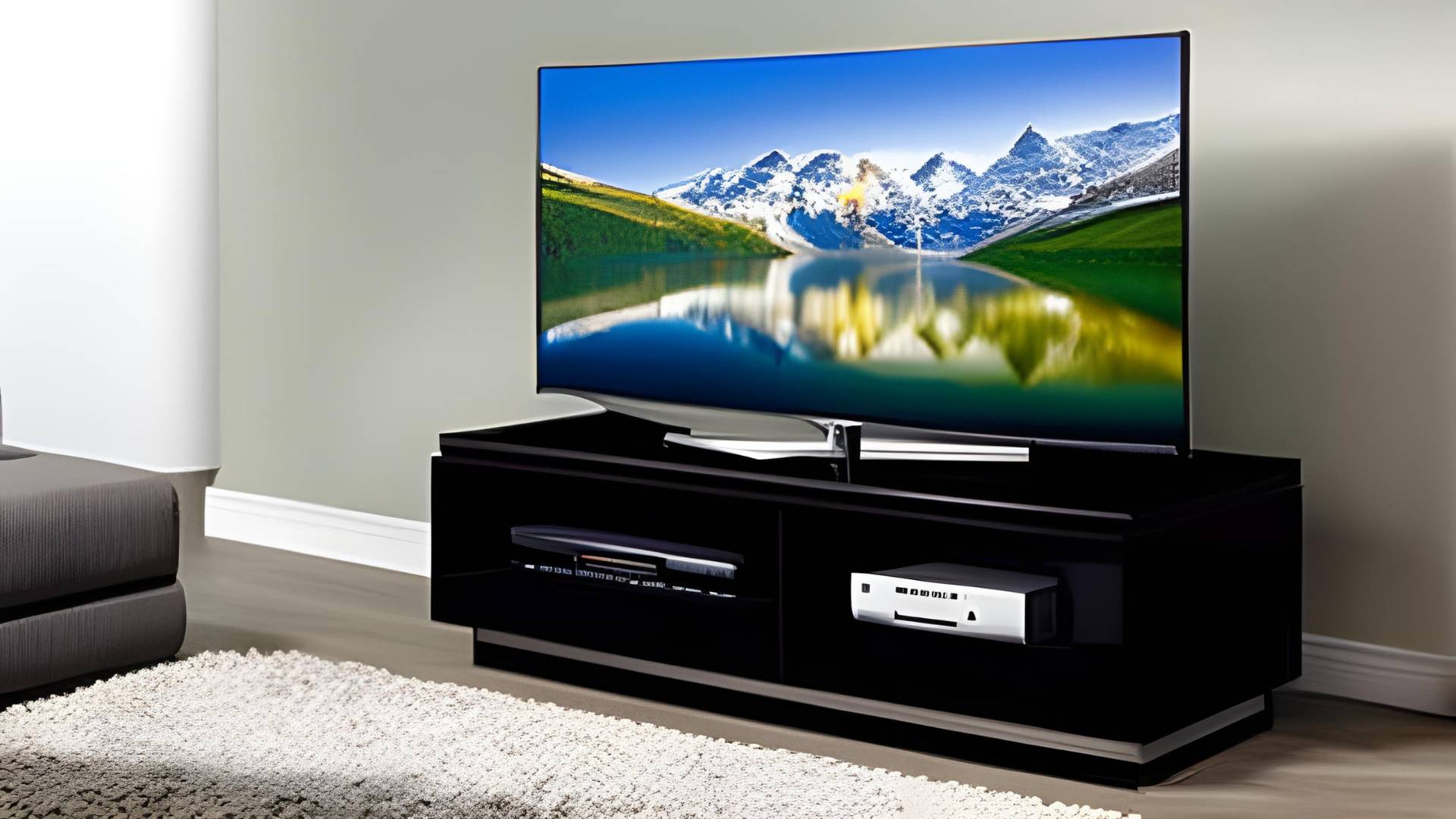Introduction
Welcome to our guide on understanding the role of a T-Con board in an LED TV. If you’ve ever experienced issues with your TV’s display, distorted images, or color discrepancies, then you may have wondered what could be causing these problems. In many cases, the culprit behind these issues can be attributed to a faulty T-Con board.
So, what exactly is a T-Con board and what role does it play in an LED TV? In this article, we will explore the function of a T-Con board, how it works, common issues that can arise, and steps to identify and troubleshoot these problems. Whether you’re a tech-savvy individual or someone looking to gain a better understanding of your TV’s components, this guide will provide you with valuable insights to help you navigate the world of T-Con boards.
Understanding the various components of a TV can be overwhelming for many people, especially when it comes to the technical aspects. However, having a basic knowledge of these components can empower you to make informed decisions and potentially save you money on repairs or replacements. So, let’s dive in and demystify the world of T-Con boards.
What is a T-Con Board?
A T-Con board, short for Timing Controller board, is a crucial component found in modern LED TVs. It is responsible for processing and controlling the timing of the image signals that are displayed on the screen. Essentially, the T-Con board acts as a bridge between the main video board and the actual liquid crystal display (LCD) panel.
The primary function of the T-Con board is to interpret and synchronize the video signals received from the main board and then send them to the LCD panel in a format that can be displayed on the screen. This process includes controlling parameters such as resolution, color depth, refresh rate, and screen positioning.
One of the key elements that the T-Con board manages is the pixel data that determines the color and intensity of each pixel on the screen. By controlling the pixel data, the T-Con board ensures that the images displayed appear sharp, vibrant, and accurately represent the intended colors.
It is important to note that T-Con boards are not universal and vary in design, specifications, and compatibility across different TV models and brands. Manufacturers often customize T-Con boards to optimize them for specific screen sizes, resolutions, and display technologies.
Overall, the T-Con board plays a vital role in ensuring that the video signals are correctly processed and displayed on the screen, enabling us to enjoy high-quality images and videos on our LED TVs.
The Function of a T-Con Board
The T-Con board serves several important functions in an LED TV. Let’s explore these functions in detail:
- Signal Processing: The T-Con board receives video signals from the main board and processes them to ensure they are in a suitable format for the LCD panel. It converts the incoming signals into a compatible format while adjusting parameters such as resolution, color depth, and screen positioning.
- Timing Control: As the name suggests, the T-Con board is responsible for controlling the timing of the video signals displayed on the screen. It ensures that the pixels are refreshed at the correct intervals, resulting in smooth motion and reducing motion blur or judder.
- Image Enhancement: The T-Con board incorporates various image enhancement algorithms to improve the quality of the displayed images. These algorithms can include noise reduction, color correction, edge enhancement, and dynamic contrast adjustment, among others. These enhancements contribute to a more visually appealing and immersive viewing experience.
- Panel Compatibility: Each LCD panel has specific characteristics, such as pixel resolution, size, and refresh rate. The T-Con board acts as a mediator between the main board and the LCD panel, ensuring that the video signals are correctly interpreted and sent to the panel in a format that matches its specifications. This compatibility is essential to ensure optimal performance and prevent any mismatched signals from affecting the image quality.
By performing these functions, the T-Con board plays a critical role in delivering high-quality images on the LED TV screen. It acts as a central controller, coordinating various processes to ensure that the video signals are accurately processed and displayed in a way that optimizes the viewing experience for the user.
How Does a T-Con Board Work?
To understand how a T-Con board works, we need to delve into its internal components and their interactions:
- Input Signals: The T-Con board receives video signals from the main board, which may include HDMI, component, or other video inputs. These signals contain information about the image to be displayed on the screen.
- Signal Processing: The T-Con board processes the incoming video signals, adjusting parameters such as resolution, color depth, and timing. It converts the signals into a format that the LCD panel can understand and display.
- Data Control: The T-Con board controls the pixel data, which determines the color and intensity of each pixel on the screen. By manipulating this data, the T-Con board ensures that the correct colors are displayed at the appropriate locations on the screen to form the complete image.
- Timing Control: The T-Con board synchronizes the timing of the video signals with the LCD panel’s refresh rate. It ensures that the pixels are refreshed in a coordinated manner, preventing issues such as motion blur or screen tearing.
- Signal Transmission: Once the video signals have been processed and synchronized, the T-Con board transmits them to the LCD panel. This is done through specialized connectors or ribbon cables, which carry the signals from the T-Con board to the panel for display.
- Interaction with Other Components: The T-Con board collaborates with other components, such as the main board, power supply, and backlighting system, to ensure the seamless operation of the LED TV. It exchanges information and coordinates actions to deliver an optimal viewing experience.
Overall, the T-Con board acts as a critical intermediary between the main board and the LCD panel, playing a vital role in processing, adjusting, and transmitting video signals to produce high-quality images on the screen. Its various components and functionalities work in harmony to ensure accurate timing, resolution, color reproduction, and overall image performance.
Common Issues with T-Con Boards
While T-Con boards are essential for the proper functioning of LED TVs, they can experience certain common issues that can affect the display quality. Let’s take a look at some of the common problems that can arise with T-Con boards:
- Lines or Distortions on the Screen: One of the most noticeable issues is the appearance of horizontal or vertical lines, pixelations, or distortions on the screen. This can occur due to a faulty T-Con board that fails to properly process and transmit the video signals to the LCD panel.
- Color Inconsistencies: Another common issue is color inconsistencies, where certain areas of the screen may appear washed out, overly saturated, or exhibit incorrect color reproduction. This can be caused by a malfunctioning T-Con board that fails to control the pixel data accurately.
- Screen Flickering or Fluctuating Brightness: If you experience screen flickering or inconsistent brightness levels, it could be due to a faulty T-Con board that is unable to properly synchronize the timing of the video signals with the LCD panel’s refresh rate.
- Image Freezing or Lagging: Sometimes, the image on the screen may freeze, lag, or exhibit delayed response to input commands. This can be attributed to a malfunctioning T-Con board that fails to process the video signals efficiently.
- No Display or Partial Display: In some cases, the LED TV may have a complete black screen or display only a portion of the image. This can occur if the T-Con board is not transmitting the processed video signals correctly to the LCD panel.
If you encounter any of these issues with your LED TV, it is recommended to troubleshoot the T-Con board as it often plays a significant role in the mentioned problems. However, it is important to note that these issues can also be caused by other factors such as faulty cables, improper settings, or problems with the LCD panel itself.
Identifying the specific issue requires proper diagnosis and assessment by a qualified technician who can determine whether the T-Con board needs to be repaired or replaced.
How to Identify a Faulty T-Con Board
If you suspect that the T-Con board is the cause of the issues with your LED TV’s display, there are several signs and symptoms that can help you identify a faulty T-Con board:
- Visual Anomalies: Look out for any visible abnormalities on the screen, such as flickering, horizontal or vertical lines, pixelations, color inconsistencies, or a complete absence of display. These visual cues often indicate a problem with the T-Con board.
- Partial Display: If your LED TV displays only part of the image or shows a distorted portion while the rest of the screen remains blank, it could be a sign of a faulty T-Con board that is not properly transmitting the video signals to the LCD panel.
- Intermittent Issues: If the display problems occur sporadically or vary depending on the content being viewed, it could be an indication of a malfunctioning T-Con board. Intermittent issues often suggest an underlying problem with the electronic components.
- Responsive Buttons and Menus: Check the responsiveness of the buttons and menu options on your TV. If they do not function properly or are slow in responding to commands, it could be a result of the T-Con board’s inability to process and interpret the input signals correctly.
- External Testing: Connecting an external video source, such as a DVD player or gaming console, to your TV can help determine if the issue lies with the T-Con board. If the external source displays correctly while the TV’s internal sources exhibit problems, it suggests that the T-Con board may be at fault.
However, it is essential to note that these symptoms are not exclusive to T-Con board issues and can sometimes be caused by other factors, such as faulty cables, main board problems, or issues with the LCD panel itself. Proper diagnosis by a qualified technician is recommended to accurately identify the faulty component.
If you observe any of these signs or encounter display issues with your LED TV, it is advisable to consult a professional technician to diagnose and resolve the problem effectively.
Troubleshooting Steps for T-Con Board Problems
If you suspect that the T-Con board is causing the display issues with your LED TV, here are some troubleshooting steps you can take:
- Power Cycle: Start by performing a power cycle of your TV. Unplug it from the power source, wait for a few minutes, and plug it back in. This can sometimes resolve minor glitches and refresh the system.
- Check Connections: Make sure all the connections between the T-Con board, main board, and LCD panel are secure. Disconnect and reconnect the cables carefully to ensure a proper connection.
- Testing with External Sources: Connect an external video source, such as a DVD player or gaming console, to your TV. If the external source displays correctly while the internal sources exhibit the problem, it indicates a potential issue with the T-Con board.
- Factory Reset: Perform a factory reset on your TV to eliminate any potential software or setting conflicts. Consult the TV’s manual or support resources for instructions on how to perform a factory reset.
- Firmware Update: Check if there are any available firmware updates for your TV model. Visit the manufacturer’s website or contact their support for guidance on how to update the firmware. Sometimes, a software update can resolve compatibility issues with the T-Con board.
- Professional Assessment: If the troubleshooting steps mentioned above do not resolve the issue, it is advisable to consult a professional technician. They have the necessary tools and expertise to diagnose and repair T-Con board problems or recommend a replacement if required.
Keep in mind that these troubleshooting steps serve as general guidelines and may not address every possible issue. It is important to consult the specific documentation and support resources provided by your TV manufacturer for model-specific troubleshooting instructions.
Remember, working on the internal components of your TV can be complex and potentially dangerous. If you are not confident in your technical abilities, it is best to seek professional assistance to avoid causing further damage to your TV.
How to Replace a T-Con Board
If you have determined that the T-Con board in your LED TV needs to be replaced, follow these general steps:
- Gather Information: Identify the specific model and make of your TV, as well as the model number of the T-Con board. This information will help you find the correct replacement board.
- Order the Replacement Board: Find a reputable supplier or contact the TV manufacturer’s authorized service center to purchase the replacement T-Con board. Make sure to double-check the compatibility with your TV model.
- Prepare for Replacement: Before starting the replacement process, unplug the TV from the power source and ensure it is completely powered down. Place a soft cloth or mat on a flat surface to protect the screen while working.
- Access the T-Con Board: Remove the back cover of your TV to gain access to the internal components. Locate the T-Con board, which is typically positioned near the center or top of the TV’s back panel.
- Disconnect Cables: Carefully detach all the cables connected to the T-Con board, including the ribbon cables from the LCD panel and the connectors from the main board. Take note of the cable positions to ensure correct reconnection later.
- Replace the T-Con Board: Remove any screws or brackets securing the T-Con board to the TV chassis. Gently take out the faulty T-Con board and replace it with the new one, aligning it with the mounting holes and connectors.
- Reconnect Cables: Attach the cables back to the new T-Con board, ensuring they are securely plugged in and properly oriented. Double-check the cable positions to avoid any misalignments.
- Reassemble the TV: Put the back cover of the TV back into place, securing it with screws or clips. Make sure all the components are properly aligned before tightening any screws.
- Power Up and Test: Plug in the TV and power it on to test the new T-Con board. Check if the display issues have been resolved and if the TV functions as expected.
It is important to note that the replacement process can vary depending on the TV model and manufacturer. It is recommended to consult the TV’s manual or seek professional assistance if you are uncertain about any steps or encounter difficulties during the replacement process.
Remember to handle the internal components of your TV with care, keeping static electricity in mind. If you are uncomfortable or inexperienced with TV repairs, it is advisable to seek the help of a professional technician to ensure a successful and safe replacement of the T-Con board.
Conclusion
Understanding the role of a T-Con board in an LED TV is crucial for troubleshooting and resolving display issues. The T-Con board acts as a vital component that processes and controls the timing of the video signals sent to the LCD panel. By ensuring proper signal processing, timing control, and image enhancement, the T-Con board plays a significant role in delivering high-quality visuals on the screen.
Common issues with T-Con boards, such as lines or distortions on the screen, color inconsistencies, and flickering, can impact the viewing experience. Identifying a faulty T-Con board involves observing visual anomalies, partial display, and intermittent issues. By troubleshooting the TV and ruling out other potential causes, it becomes easier to determine if the T-Con board requires repair or replacement.
In case the T-Con board needs to be replaced, it is essential to gather the necessary information, order the correct replacement board, and follow proper safety precautions. While replacing the T-Con board can be a delicate process, it allows for the restoration of optimal functionality and a seamless viewing experience.
If you are uncertain about any steps or lack technical expertise, it is always advisable to seek professional assistance to ensure the proper replacement of the T-Con board and to avoid causing further damage to your TV.
By familiarizing yourself with the functions and troubleshooting methods related to the T-Con board, you are better equipped to address issues and maintain the performance of your LED TV. Ultimately, a properly functioning T-Con board plays a crucial role in delivering high-quality visuals, allowing you to fully enjoy your viewing experience.







